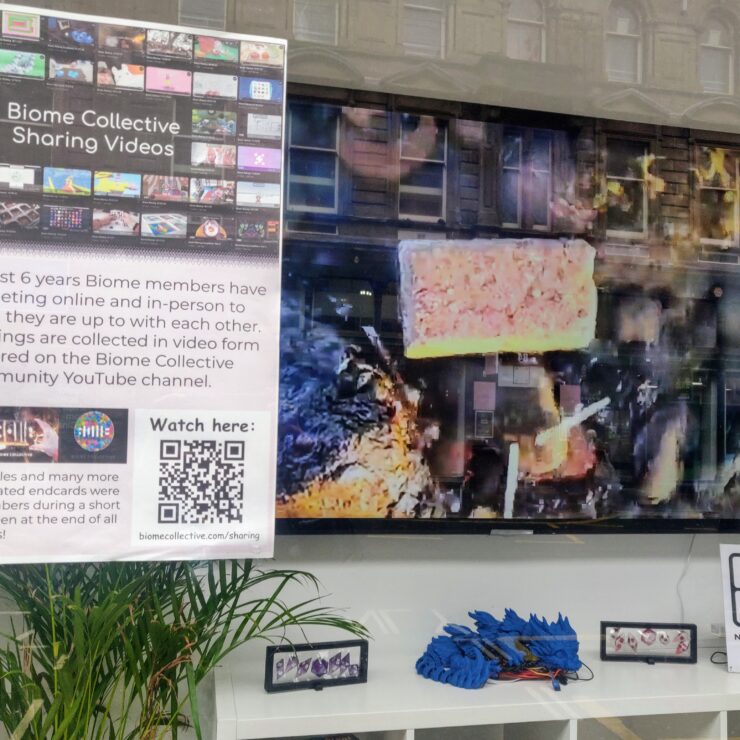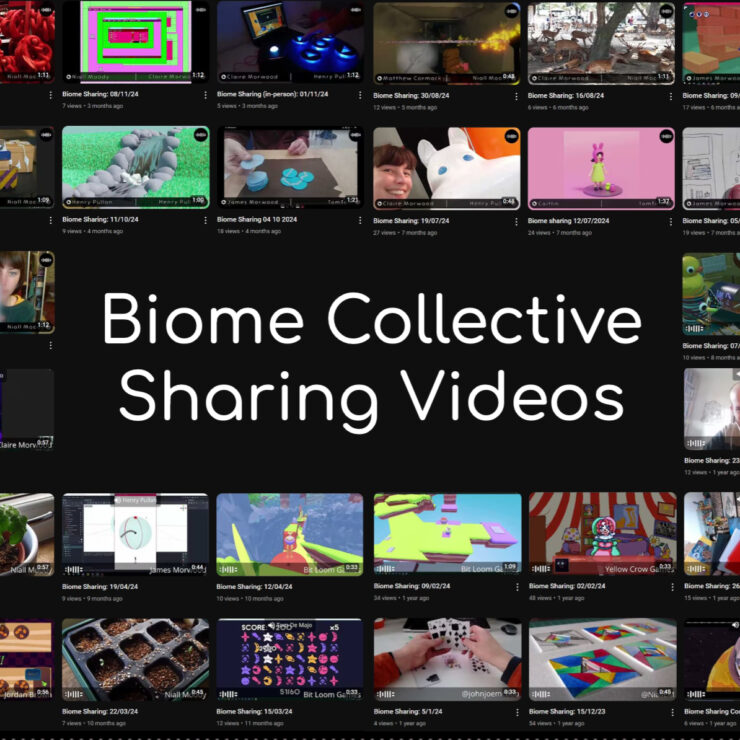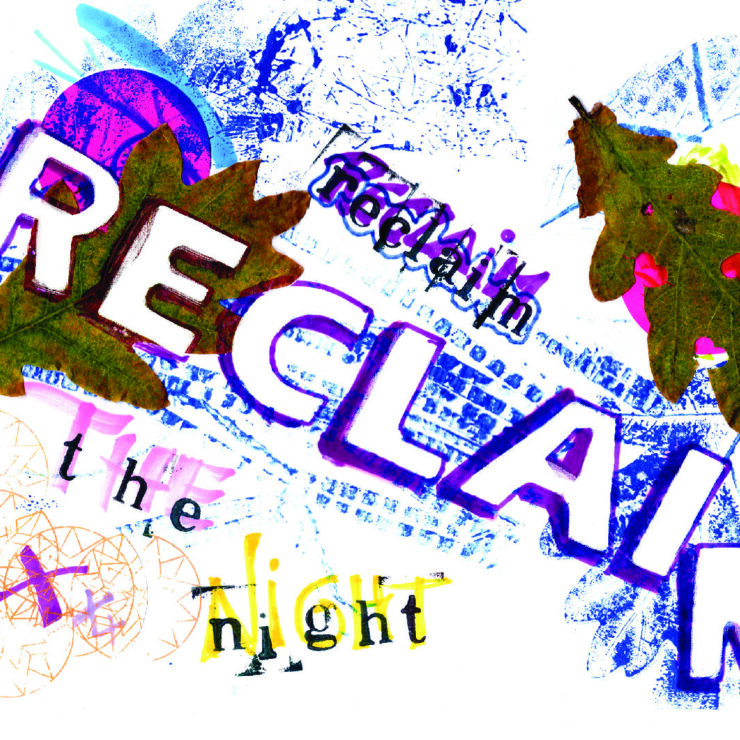DJCAD Masters Show 2019 Review: Guided With Touch
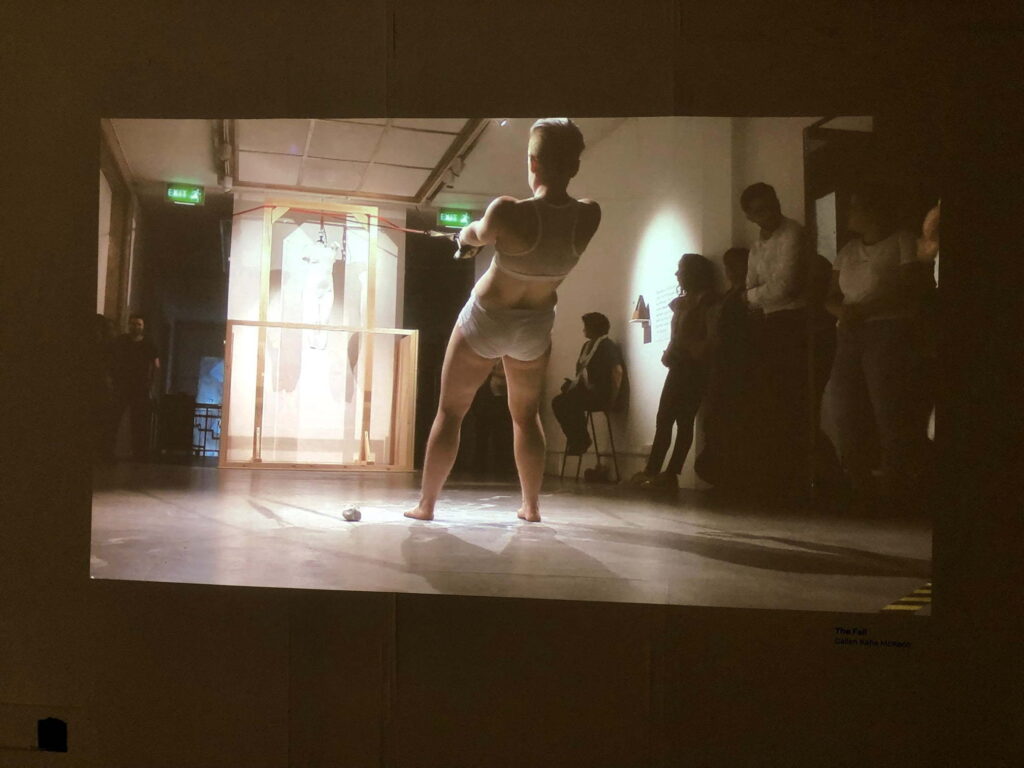
How do I even start to determine the quality of a particular work of art? Versions of this question bounced around in my head as I made my way to this year’s Masters Show at Duncan of Jordanstone College of Art & Design, which presented the work of graduates from a variety of MFA, MSc and MDes courses.
Walking into the building makes me feel a familiar dread, one born from never being quite so good at thinking about art on the spot and exacerbated by having to look at a piece while the artists themselves look at me. I’ve always felt that art is better digested with time and space to think, read accompanying materials and talk to other people who also experienced it. Having agreed to write about the show for NEoN within a deadline that affords me only a couple of fleeting visits, I was bound to experience the worst possible outcome – an awkward time.
To start with I saw a few pieces that stood out to me. Nicholas Brodie’s piece, described by the artist as “a quiet conversation between myself, Dundee and its people”, included a stunning photographic presentation of people who live in the city and in some cases have been part of its industry. On a similar vein, Kiera Marshall has a looping video of someone looking directly at the viewer as you enter the space. The piece explores perceptions and the artists’ personal experience of the military from a childhood familiarity with the command ‘at ease’. The video playing is undeniably hypnotic. Kiera has treaded the elusive line of visually capturing a concept in such a way the viewer can fully understand it as it is presented in front of them, but then completely forget it when they walk away.
So far so beautiful. These pieces allowed me to experience something captivating without the worry of having to look like I understood it. Just looking at these pieces was a journey in itself.
More abstractly, Xinyun Gou presented something just as captivating. Creating circles within a larger frame hanging on the wall she made a clock-like machine. Little sculptures of non-descript human bodies populated the circles, each moving like the arm of a clock, slowly and mechanically. Like a dream written by David Fincher, it’s hard to look away or stop noticing the texture and pace of every movement.
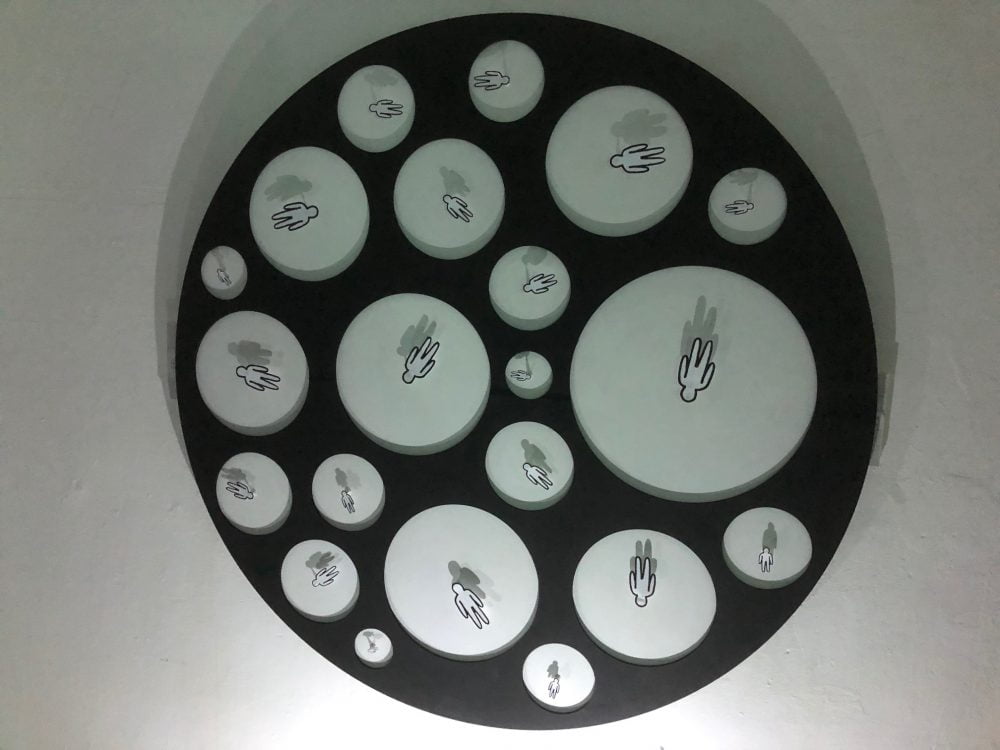
Equally concerned with the viewer’s movement through the room, Ana Hine’s work deals with trauma and pregnancy loss. The mostly text-based pieces challenge the viewer with bold statements clearly, if not shockingly, displayed around the room. Within these statements, however, Ana has used Teeline shorthand to process those thoughts further in a way that might have been “too painful to write about in plain English”. The shorthand is translated in an accompanying zine. This means the experience of walking in the room is surprisingly twofold; the initial encounter and then a detailed investigation.
The unfolding of the viewer’s journey in the space does not end there. In my favourite addition to the piece, Ana has created a small room on the way out. Easy to miss, the walls inside are covered in chalk paint and a small sign offers the opportunity for others to write their experience up on the wall. As well as the precious feeling of being let in on the inner thoughts of others, the space also physically functions as an experience of the fear, dread and reflectiveness present in the piece. Being inside the room felt like being inside someone’s thoughts.
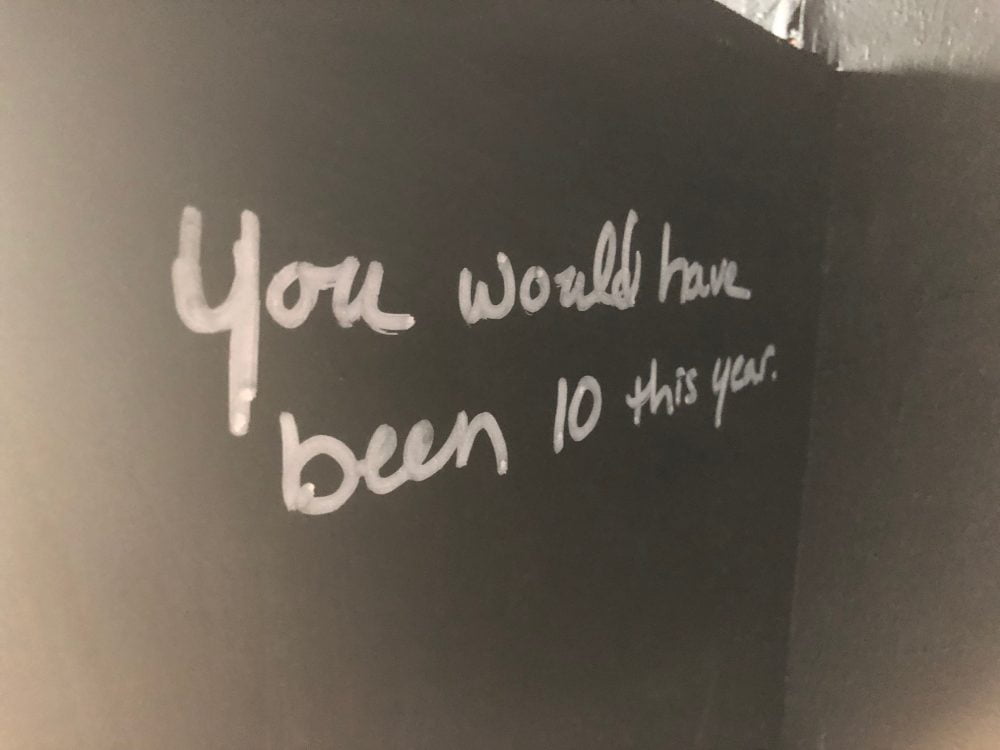
At this point I realised the common thread that had made this experience so fascinating to me. All of these pieces were about bodies. Whether it was looking at details and expressions, thinking of them more conceptually or literally having to move my own body in different ways to fully see the work – none of them took me to the overthink-y head space I often long for. Instead of pushing me inside my head they pushed me inside my body.
Two pieces reaffirmed this experience for me. Kate Bell’s piece directly engages with the relationship between the physical and everything else. Though she describes the work as “physical over the digital realm […] believing there is more to life than the black mirror”, the central part of her exhibition is in fact digital – a looping short film. Through this medium, however, the viewer gets to have a thoroughly physical experience. The image is framed vertically and a key sculpture, prominent in the video, sits there in the audience with you, watching the film. The narration is captivating, and I caught other viewers both laughing out loud and being completely engrossed.
In a digital piece and how it is contextualised, Bell offers the viewers a physical experience. Whether it be laughing, listening or just sitting there and noticing you might be positioned just like the sculpture is, the room makes our collective bodies the protagonists of its story.
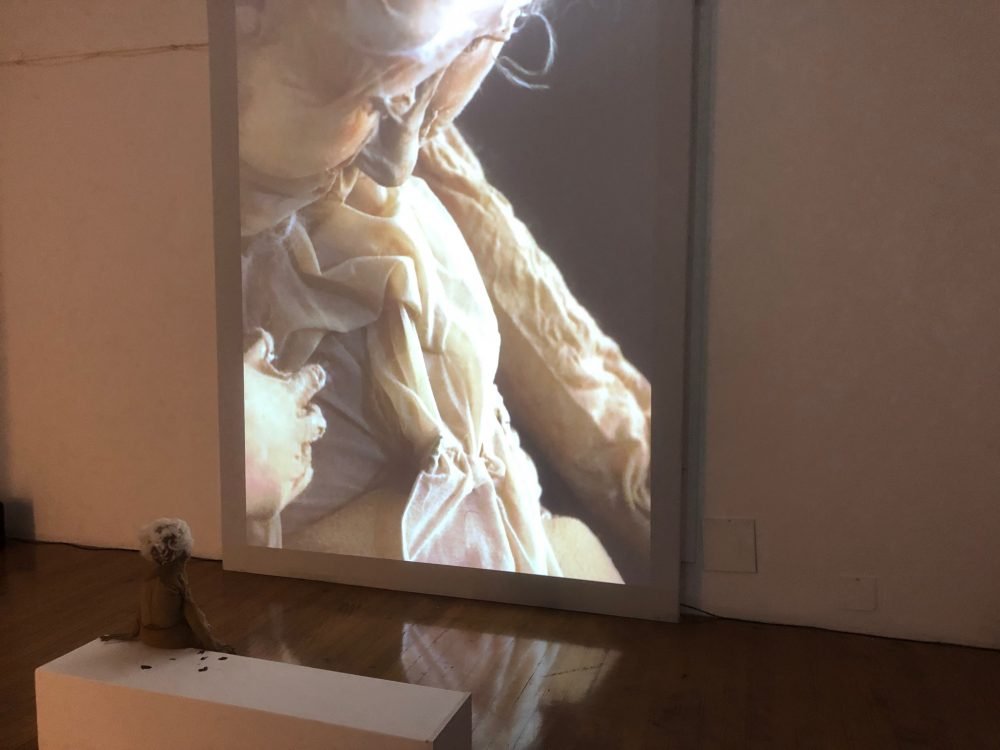
The second piece, and perhaps the one that impacted me the most through the show, was made by Cal McKeon – who has been training for months to transform their body. Before the training, they cast and sculped their own body in plaster – which became an essential part of a performance that took place on opening night. As I arrived accompanied by a friend, we both noticed a large screen of Cal pulling on a rope which was suspending the sculpture through a set of gallows. From their body language it was clear the task was taxing both physically and emotionally.
Eventually we looked away from the video and started talking to each other, then we heard a violent thump directly above us. The whole room was startled, I’m sure I heard a couple of shrieks. After seconds of looking at each other with concerned expressions we’d later make fun of, we all realised the video was playing live from a different room and Cal just dropped the sculpture directly above us.
In a piece that aims to challenge our collective binary construct of gender, McKeon guides us through with friction, weight, texture and noise. A physical understanding of the piece emerges, one that bypasses anyone’s need to intellectually understand art. An unspoken theme of this exhibition seems to be human bodies, and experiencing it is a journey of connecting with your own.
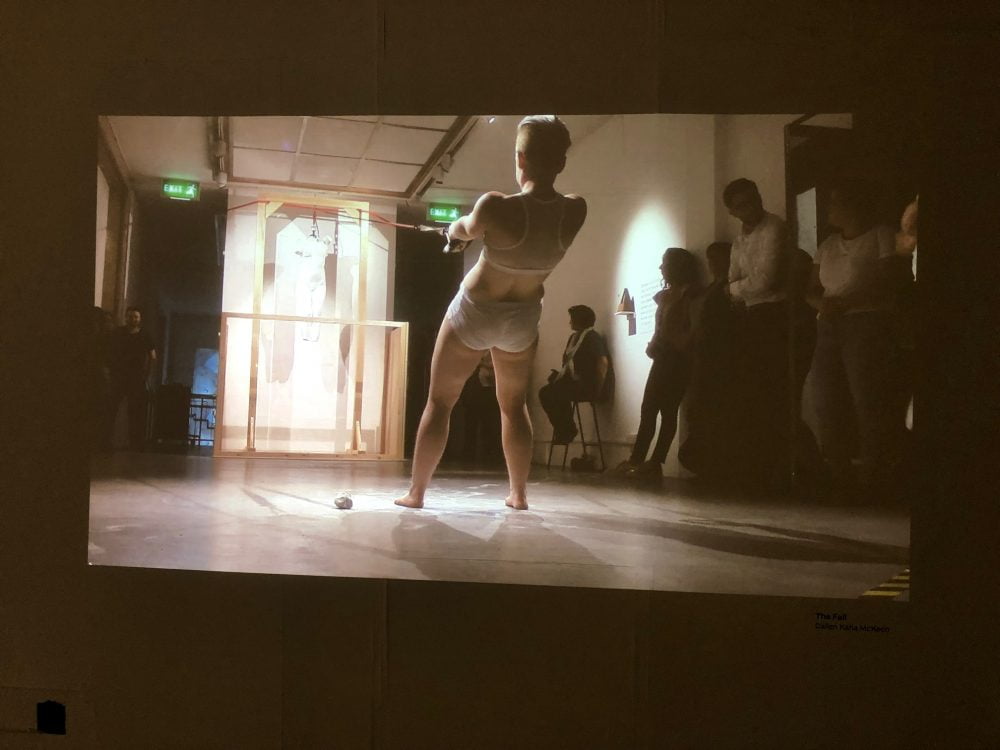
I am unable to describe more about the show and can only recommend that you embrace the experience of walking through it.
The show runs until 26 August and is open Mon- Fri 10am – 8pm, Sat & Sun 10am – 4pm, at Duncan of Jordanstone College of Art & Design, University of Dundee, 13 Perth Road, Dundee, DD1 4HT.
By Sam Gonçalves
